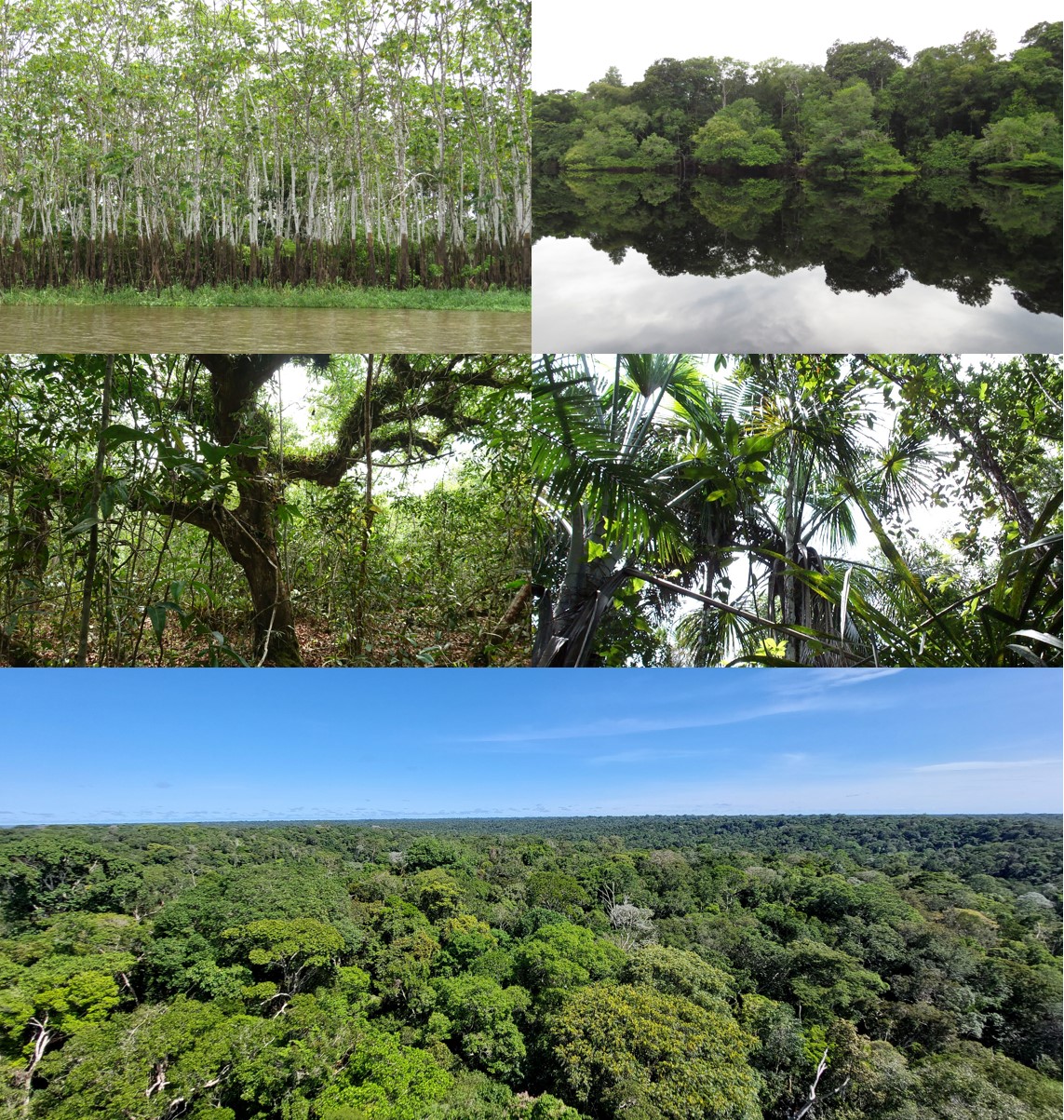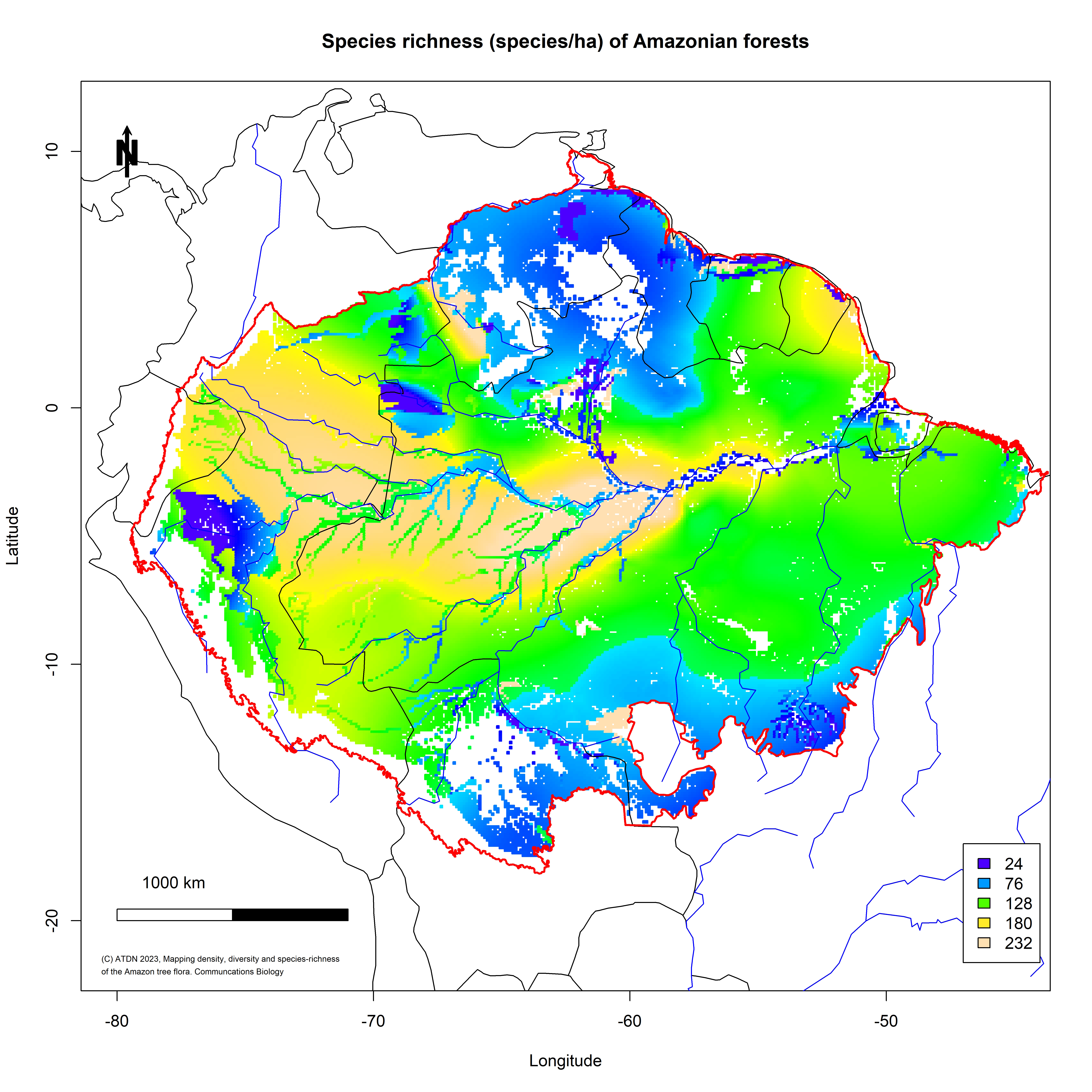Mapping tree diversity in the Amazon Forest
Published in Ecology & Evolution

Mapping tree diversity and richness over an area of nearly 6 million square kilometers is not an easy task. With the Amazon Tree Diversity Network we started doing this with just a few hundred plots in 2000 and 2003. When the numbers increased this allowed us to figure out what might drive diversity across this area. We knew that soil would have a strong influence but did not have a proper way of mapping that.
Finally, when the number of plots had risen to around 2000, using a relatively simple soil-forest type map we dared to take on this task.
Modeling diversity for four different soil-forest systems (white sand forest, floodplain forest, swamp forest and, the largest, terra-firme forest) and then combining them into one map, provided us with a map that could explain around 70% of the variation at plot level, based on geographical location alone.

Fig. 1. Forest types in Amazonia. Clockwise from top left. Varzea forest with dominance of Cecropia latiloba, Ilha de Marchanteria; Igapo forest, Jau river; Swamp forest, central Guyana; Terra firme forest, Reserva Ducke; White sand forest with Aldina heterophylla. (Photos Hans ter Steege)
Initially, I thought that just publishing the map with meta-data and grids would suffice but the members of the network begged to differ and came up with suggestions and questions, so the manuscript grew out to a more serious research paper. Bill Magnusson suggested improving our estimation of spatial auto-correlation and Ken Feeley suggested adding some more climate in the modeling, among the various suggestions.
Our modeling of species richness of terra-firme forest (the forest type with enough data to test climatic drivers) could explain over 40% of the variation at plot level. Cumulative water deficit, regional tree density and temperature seasonality provided a map with very low spatial residuals, except for the Guyana shield area where richness and diversity are always substantially lower than predicted.
A recurrent question is why some forest types have higher species richness than others. For forests on white sand, nutrient poorness has been suggested, for varzea forest flooding. Our analysis suggests that the area a forest type occupies in Amazonia has a very strong relation with the richness and diversity on the plots in those forest types, which supports the idea that meta-populations dynamics may be more important than ecological factors
Based on the reviews we were asked to add maps with the errors of the modeling, unbiased test and some more, which helped to improve the paper that has now been published.
We provide substantial meta-data and richness and diversity data for anyone to delve further into the diversity of this amazing area.

Fig 2. Species richness in Amazonia.
Follow the Topic
-
Communications Biology

An open access journal from Nature Portfolio publishing high-quality research, reviews and commentary in all areas of the biological sciences, representing significant advances and bringing new biological insight to a specialized area of research.
Related Collections
With Collections, you can get published faster and increase your visibility.
Stem cell-derived therapies
Publishing Model: Hybrid
Deadline: Mar 26, 2026
Forces in Cell Biology
Publishing Model: Open Access
Deadline: Apr 30, 2026


Please sign in or register for FREE
If you are a registered user on Research Communities by Springer Nature, please sign in